5 Best Voicebot Fine Tuning Tools in 2025
In 2025, top voicebot fine-tuning tools include Labellerr, Label Studio, Labelbox, Kili, and Databricks Lakehouse. These platforms offer customizable workflows, multi-format support, collaborative annotation, and seamless ML integration.
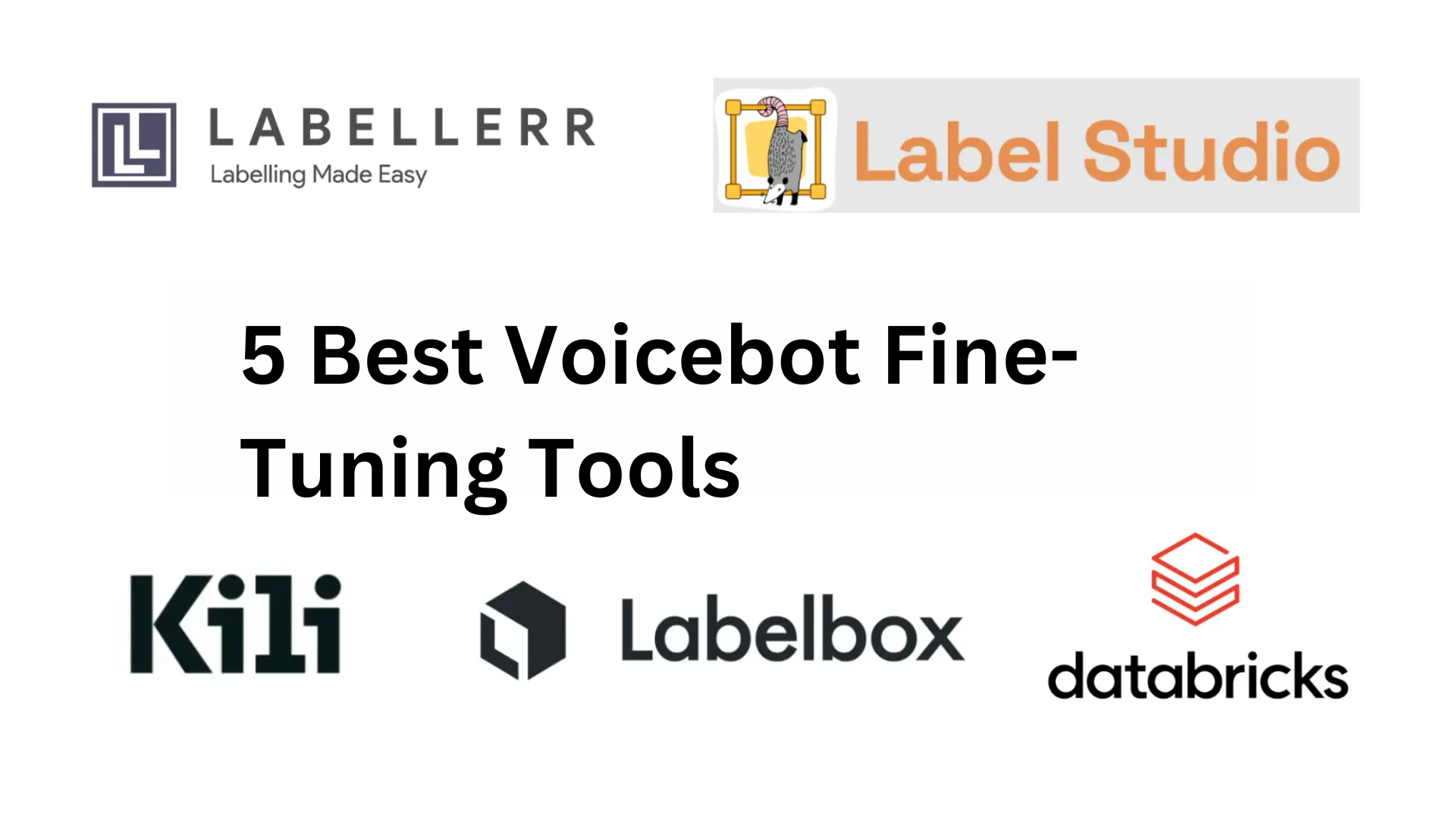
Fine-tuning Language Model Models (LLMs) for voice bots is a pivotal step in optimizing their performance across various voice-based natural language processing tasks.
In this incisive examination, we look at five leading tools - Labellerr, Kili, Label Studio, Databricks Lakehouse, and Labelbox - each precisely crafted to meet the specific needs of fine-tuning voice bots.
Whether you're a machine learning enthusiast or a seasoned expert looking to improve the capabilities of your speech bots, this thorough guide delves into the unique features, benefits, and specialized approaches of these cutting-edge tools.
Join us on this journey to unlock the full potential of voice bot optimization with these state-of-the-art fine-tuning solutions.
Table of Contents
Top Voice Bot Fine Tuning Tool
1. Labellerr

Labellerr's Voice Bot Fine-Tuning Tool emerges as an advanced and efficient platform tailored to assist machine learning teams in setting up the fine-tuning process seamlessly for voice bot applications.
With Labellerr's versatile and customizable workflow, ML teams can expedite the preparation of high-quality training data for voice bot fine-tuning in a matter of hours.
The tool offers a range of features aimed at optimizing the fine-tuning process, making it a smart, simple, and fast solution.
Key Features
1. Custom Workflow Setup
Labellerr enables the creation of custom annotation tasks tailored to voice bot applications, ensuring the labeling process aligns with specific requirements such as speech recognition, intent classification, and semantic understanding.
2. Multi-Format Support
It has versatility Across Data Types. Labellerr supports various data types, including audio recordings, transcripts, and metadata.
This adaptability is particularly valuable for voice bot applications that involve different types of audio data.
3. Collaborative Annotation for Efficiency
Labellerr's collaborative annotation capabilities streamline the annotation process for voice bot datasets.
With features like real-time collaboration and version control, ML teams can ensure consistency and accuracy in annotations.
4. Quality Control Tools
Labellerr guarantees annotation precision. Labellerr has comprehensive quality control capabilities, such as annotation history and disagreement analysis.
These technologies help to ensure the accuracy and quality of annotations, which is critical for voice bot training and performance.
5. Integration with Machine Learning Models
Active Learning Workflows: Labellerr seamlessly integrates with machine learning models, enabling active learning workflows for voice bot fine-tuning.
Leveraging pre-trained models for initial annotations followed by human correction enhances efficiency and improves fine-tuning results.
Labellerr's Voice Bot Fine-Tuning Tool positions itself as an all-in-one platform empowering machine learning teams to efficiently prepare high-quality datasets for fine-tuning voice bot applications.
With its user-friendly design and focus on customization and collaboration, Labellerr offers a valuable solution for unlocking the full potential of voice bots in the evolving landscape of conversational AI and natural language understanding.
2. Label Studio
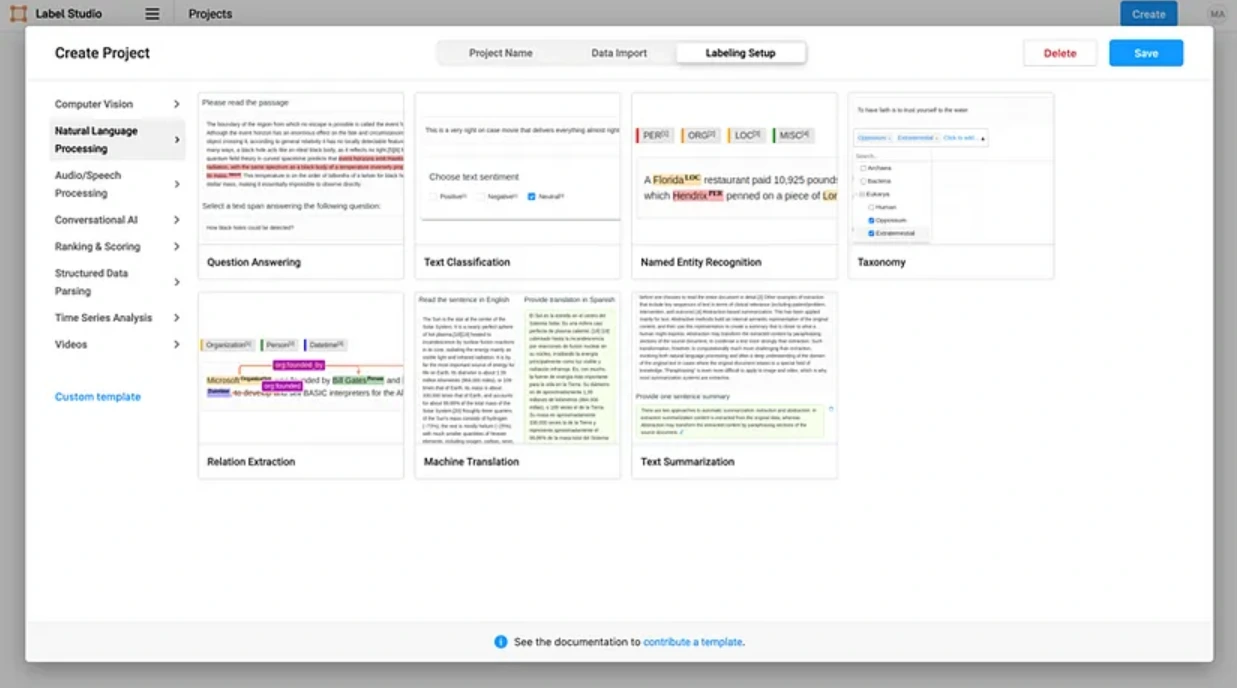
Label Studio's Voice Bot Fine-Tuning Tool is a versatile and powerful platform specifically designed to enhance the process of fine-tuning voice bots.
This tool plays a crucial role in preparing the data essential for refining voice bot models by offering a range of features tailored to the intricacies of voice bot optimization.
With Label Studio, users can create customized annotation tasks, allowing for the precise labeling of data relevant to the specific requirements of voice bot fine-tuning, including tasks such as speech recognition, intent classification, and dialogue management.
Key Features
1. Custom Data Annotation Tasks
Label Studio empowers users to create custom annotation tasks tailored specifically to the needs of fine-tuning voice bots.
This includes tasks such as speech recognition, intent classification, entity extraction, and dialogue management.
By customizing annotation tasks, users can ensure that the labeled data aligns precisely with the requirements of their voice bot models.
2. Versatile Multi-Format Support
Label Studio supports a wide range of data formats commonly used in voice bot applications, including audio recordings, transcriptions, metadata, and contextual information.
This versatility enables users to handle multi-modal data effectively, incorporating diverse sources of information into the fine-tuning process for voice bots.
3. Collaborative Annotation Capabilities
Label Studio facilitates collaboration among team members by providing robust features for collaborative annotation.
Multiple annotators can work concurrently on the same dataset, ensuring consistency and accuracy in the labeled data.
Collaborative annotation streamlines the workflow, distributes the workload efficiently, and fosters teamwork among stakeholders involved in voice bot development.
4. Quality Control Features
To maintain the quality and reliability of annotated data, Label Studio offers comprehensive quality control features.
These include annotation history, which allows users to track changes and revisions made to annotations over time, and disagreement analysis, which identifies discrepancies among annotators and resolves them effectively.
By implementing quality control measures, users can ensure the accuracy and consistency of the labeled data, which is critical for fine-tuning voice bot models.
5. Seamless Integration with ML Models
Label Studio seamlessly integrates with machine learning (ML) models, enabling active learning workflows for voice bot fine-tuning.
Users can leverage pre-trained ML models to automate certain aspects of the annotation process, such as initial labeling or data preprocessing.
This approach, known as active learning, combines the strengths of human expertise with the efficiency of ML algorithms, resulting in faster annotation cycles and improved model performance.
By integrating with ML models, Label Studio empowers users to optimize the fine-tuning process and achieve superior results in voice bot development.
3. Labelbox

Labelbox's Voice Bot Fine-Tuning Tool is a comprehensive solution crafted to streamline the fine-tuning process of voice bot models, particularly those powered by Large Language Models (LLMs).
LLMs play a crucial role in voice bot applications by enabling tasks such as speech recognition, intent classification, dialogue management, and natural language understanding.
Labelbox's tool is specifically tailored to enhance the performance and adaptability of voice bot models through structured fine-tuning workflows.
Key Features and Workflow
1. Customizable Ontology Setup:
Define a relevant classification ontology aligned with the specific use case of the voice bot, ensuring the model understands and generates content specific to the targeted domain.
2. Project Creation and Annotation in Labelbox Annotate:
Create a project in Labelbox, matching the defined ontology for the data intended to be classified by the voice bot.
Utilize Labelbox Annotate to generate labeled training data efficiently and accurately, facilitating the annotation process.
3. Iterative Model Runs
Leverage iterative model runs to fine-tune the voice bot model, especially those utilizing LLMs like OpenAI's GPT-3.
Labelbox supports diagnosing model performance, identifying high-impact data, labeling data, and creating subsequent model runs for iterative fine-tuning.
4. Google Colab Notebook Integration
Seamlessly integrates with Google Colab Notebook, allowing for the importation of necessary packages, including OpenAI and Labelbox, directly within the notebook.
API keys connect to instances seamlessly, streamlining the workflow and enhancing accessibility.
5. Adaptive Training Data Generation
Guide users in generating training data based on the defined ontology, crucial for adapting the voice bot model to the specific use case and capturing relevant information.
6. Cloud-Agnostic Platform
Ensure compatibility with various model training environments and cloud service providers (CSPs), enhancing flexibility and accessibility for users.
Advantages
1. Time and Cost Efficiency
Save significant time and costs by leveraging foundational models like GPT-3 as a starting point for fine-tuning voice bot models.
2. Reinforcement Learning from Human Preferences (RLHP)
Provide a framework for incorporating RLHP, improving the performance of voice bot models based on human feedback.
3. Iterative Improvement
Empower users to continuously fine-tune voice bot models based on real-world data priorities, ensuring ongoing improvement and adaptability.
4. Performance Evaluation
Measure model performance, identify weaknesses, and iteratively improve by incorporating relevant data back into the fine-tuning process.
5. Catalog Integration for Priority Data
Utilize Labelbox Catalog features to prioritize data that will have the highest impact on the next training iteration, effectively addressing edge cases.
Labelbox's Voice Bot Fine-Tuning Tool combines flexibility, efficiency, and iterative improvement, offering a structured approach for optimizing voice bot models in diverse applications.
The integration with Google Colab Notebook and the cloud-agnostic platform further enhances the user experience, making it an invaluable resource for machine learning teams seeking to fine-tune voice bot models for specific use cases.
4. Kili
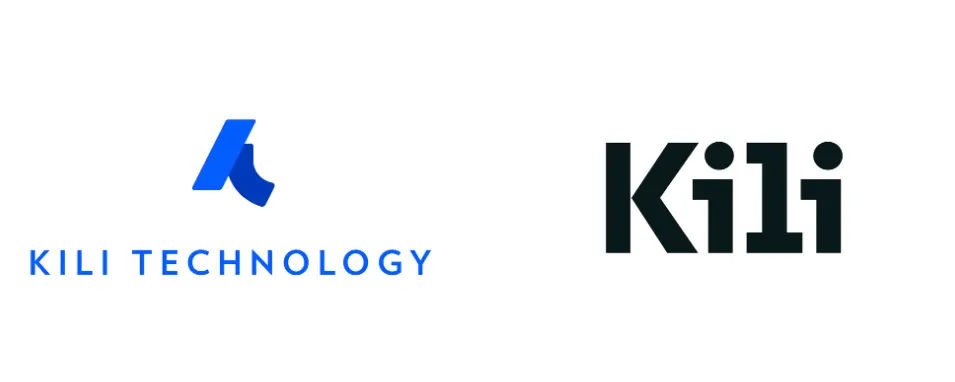
Kili's Voice Bot Fine-Tuning Tool is a comprehensive and intuitive solution designed for individuals and enterprises aiming to optimize the performance of their Voice Bot Models (VBM), particularly those powered by Language Model Models (LLMs).
The platform offers a seamless experience, addressing crucial elements essential for successful fine-tuning, including clear evaluation, high-quality data labeling, feedback conversion, seamless LLM integration, and expert annotator access.
Key Features and Advantages
1. Clear Evaluation for Effective Fine-Tuning
Custom Evaluation Criteria: Establish criteria such as following instructions, creativity, reasoning, and factuality tailored to voice bot applications.
Automated LLM Assessments: Combine automated assessments with human reviews for scalable and precise evaluation.
2. High-Quality Data Labeling
Diverse Task Handling: Cover a mix of tasks including classification, ranking, transcription, and dialogue utterances relevant to voice bot fine-tuning.
Advanced QA Workflows: Implement advanced QA workflows, QA scripts, and error detection mechanisms to ensure top-notch data annotation.
3. Feedback Conversion for Actionable Insights
Advanced Filtering System: Overcome noise and information scarcity in user feedback through an advanced filtering system.
Efficient Targeting: Swiftly identify significant conversations, converting user insights into actionable training data for voice bot optimization.
4. Seamless Integration with Leading LLMs
Native Copilot LLM-Powered System: Utilize a native Copilot LLM-powered system for annotation, eliminating unnecessary 'glue' code.
Plug-and-Play Integrations: Seamlessly integrate with market-leading LLMs like GPT, simplifying the fine-tuning process.
5. Expert Annotator Access for Industry-Relevant Excellence
Qualified Data Labelers: Access qualified annotators with industry-specific expertise crucial for voice bot fine-tuning.
Handpicked Labelers: Ensure high-quality standards with handpicked annotators, delivering labeled datasets swiftly, often within days.
6. Positive User Testimonials
User-Friendly Interface: Benefit from a user-friendly platform with easy navigation, enhancing the overall user experience.
Efficient Tools: Utilize efficient tools for data labeling and voice bot fine-tuning, as praised by user testimonials.
Kili's Voice Bot Fine-Tuning Tool emerges as a leader in the field, offering a comprehensive solution to address the complexities of voice bot optimization.
With its intuitive interface, advanced features, and positive user feedback, Kili's platform is a valuable resource for individuals and enterprises looking to enhance the performance of their voice bot models.
5. Databricks Lakehouse
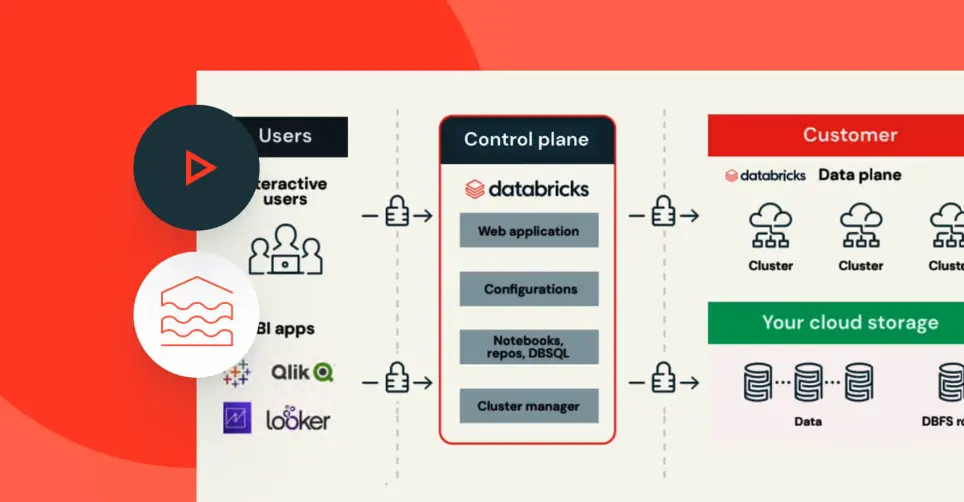
Databricks Lakehouse provides a comprehensive solution tailored for fine-tuning Language Model Models (LLMs) to enhance Voice Bot performance, with a strong emphasis on distributed training and real-time serving endpoints.
Key Features
1. Ray AIR Integration
Utilizes Ray AIR Runtime for distributed fine-tuning of LLMs, enabling efficient scaling across multiple nodes.
Integrates with Spark data frames and leverages Hugging Face for seamless data loading.
2. Model Tuning with RayTune
Allows for hyperparameter tuning using RayTune, ensuring optimal model performance for specific voice bot use cases.
Distributed fine-tuning capabilities ensure scalability and efficiency.
3. MLFlow Integration for Model Tracking
Integrates with MLFlow for comprehensive model version tracking and logging.
Utilizes MLFlow's Transformer Flavor for standardized model storage.
4. Real-Time Model Endpoints
Facilitates deployment of fine-tuned LLMs with real-time serving endpoints on Databricks.
Offers both CPU and GPU serving options, with upcoming features for optimized serving of large LLMs.
5. Efficient Batch Scoring with Ray
Demonstrates efficient batch scoring using Ray BatchPredictor, suitable for distributing scoring across instances with GPUs.
6. Low-Latency Model Serving Endpoints
Introduces Databricks Model Serving Endpoints for low-latency and managed ML deployments.
Supports GPU serving options, with upcoming features for optimized serving of large LLMs.
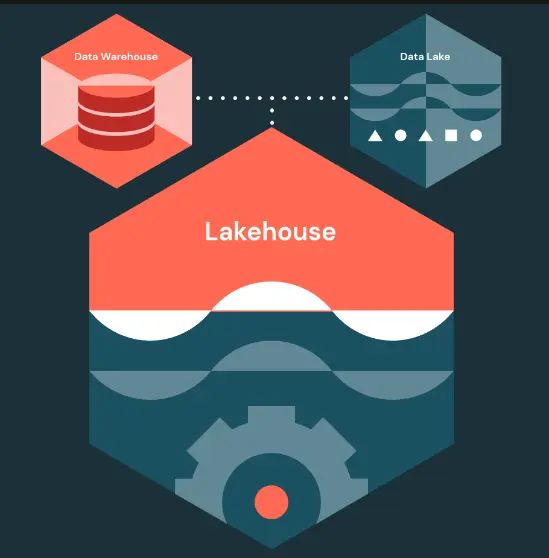
Advantages
1. Unified Framework
Ray AIR serves as a unified framework, seamlessly connecting and orchestrating Spark, Hugging Face, and MLFlow tools.
2. Distributed Scalability
Leverages distributed computing capabilities for training and inference, ensuring efficient scaling of voice bot models across clusters.
3. Flexible Model Tuning
Provides flexibility in hyperparameter tuning through RayTune, allowing adaptation of models to specific performance requirements.
4. MLFlow for Model Management
MLFlow integration enables comprehensive model versioning, tracking, and logging, enhancing model management capabilities.
5. Real-Time Serving
Real-time serving endpoints facilitate immediate deployment of fine-tuned LLMs for reduced latency in voice bot applications.
6. Support for Large Models
Addresses GPU memory constraints with solutions and recommendations for optimizing resources, ensuring support for large LLMs.
Databricks Lakehouse emerges as a leading platform for fine-tuning Voice Bot Models, offering a robust suite of features and advantages to optimize voice bot performance efficiently.
Read some of our other listicles:
Conclusion
Fine-tuning Language Model Models (LLMs) for voice bots is essential for optimizing their performance across various natural language processing tasks.
Through this exploration of five leading tools – Labellerr, Label Studio, Labelbox, Kili, and Databricks Lakehouse – we've uncovered the diverse features and tailored approaches offered by each platform.
Whether you're a machine learning enthusiast or a seasoned professional, these tools provide invaluable resources for streamlining the fine-tuning process and unlocking the full potential of voice bot optimization.
With user-friendly interfaces, customizable workflows, and advanced features like distributed scalability and real-time serving endpoints, these platforms pave the way for enhanced voice bot performance in the ever-evolving landscape of conversational AI.
Frequently Asked Questions
1. How does voicebots make technology more inclusive?
Voicebots contribute to technology inclusivity by providing an accessible interface that transcends traditional barriers like literacy, language proficiency, and physical disabilities.
By allowing users to interact using spoken language, voice bots enable individuals with diverse backgrounds and abilities to access information, services, and assistance more easily.
This inclusivity fosters greater participation in digital experiences, empowers marginalized communities, and ensures that technology benefits everyone, regardless of their circumstances or limitations.
2. What makes a successful voicebot?
A successful voicebot combines advanced natural language processing capabilities with intuitive user experiences.
It accurately understands user intents, responds promptly and appropriately, and continuously learns from interactions to improve performance.
Moreover, a successful voicebot integrates seamlessly into users' daily lives, providing valuable assistance, convenience, and personalized experiences across various platforms and devices.
Its success lies in its ability to engage users effectively, anticipate their needs, and deliver meaningful value through natural and effortless conversations.

Simplify Your Data Annotation Workflow With Proven Strategies
.png)

